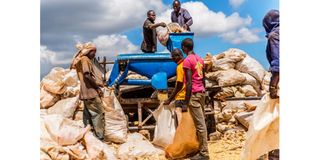Samia’s Agcot vision sets Tanzania on path to $100 billion agriculture economy

What you need to know:
- The initiative, unveiled by Prime Minister Kassim Majaliwa on April 27 and affirmed by President Samia Suluhu Hassan’s visit the following day, marks a turning point in the country’s agricultural transformation.
Dodoma. Tanzania has launched the Agricultural Growth Corridors of Tanzania (Agcot), a bold national strategy to revolutionise agriculture and rural development, drawing on the successful model of the Southern Agricultural Growth Corridor (Sagcot).
The initiative, unveiled by Prime Minister Kassim Majaliwa on April 27 and affirmed by President Samia Suluhu Hassan’s visit the following day, marks a turning point in the country’s agricultural transformation.
Agcot unifies four strategic agricultural corridors—Sagcot (Southern Highlands), Mtwara (Lindi, Mtwara, Ruvuma), Central (Dodoma, Singida, Tabora, Lake Zone) and Northern (Arusha, Kilimanjaro, Manyara, Tanga)—each tailored to its ecological potential.
The model aims to drive productivity, increase value addition, improve market access, and ensure inclusion of youth and women.
President Hassan’s visit included a stop at the Agcot exhibition booth and the launch of the Cooperative Bank of Tanzania (CBT), a key financial partner.
Addressing entrepreneurs supported by Agcot and the Building a Better Tomorrow (BBT) initiative, the President heard from ventures such as Raha Vegetable Farm, a tomato seedling producer, and Get Aroma, a spice aggregator.
Also showcased were large-scale investors like ASAS Dairies and Kisutu Winery. “These stories of transformation show that agriculture is not a sector of the past—it is the future,” she said. “We must strengthen value chains, invest in rural infrastructure, and ensure our farmers become producers for domestic and international markets.”
Central to Agcot is the development of Special Agro-Processing Zones (SAPZs), aimed at boosting industrial-scale food processing and attracting investment in irrigation, rural roads, market infrastructure, and electrification.
The programme is aligned with the Agriculture Master Plan (AMP 2050), which targets a $100 billion agricultural economy and $20 billion in agricultural exports within the next decade.
Agcot is designed as a national platform that balances public and private sector roles without partisanship. It invites participation from smallholders, cooperatives, investors, researchers, and government institutions alike.
“This is not about ownership. It’s about collaboration, alignment and delivery,” a senior advisor said. “Agcot must remain a unifying instrument for all Tanzanians.”
Under the motto “Fostering Sustainable Agriculture, Feeding Africa and the World”, Agcot is more than a policy—it is a generational shift. With high-level political backing and broad stakeholder engagement, Tanzania is positioning itself as a rising agricultural powerhouse.




